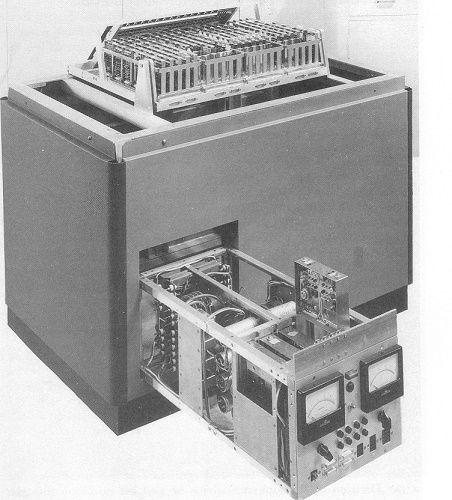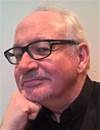Preamble
The Australian Computer Society (ACS) was formed 50 years ago, when the various state computer societies joined forces.
To mark the occasion, the ACS has initiated a heritage project to honour the many individuals who have contributed to the growth of the ICT profession in Australia.
At the heart of the project is a history of computing in Australia. It is not just a history of the ACS, but the history of a profession.
Australia has the longest computing history of any country, excepting the US and the UK, and CSIRAC in the Museum of Victoria is the oldest computer still in existence.
Previously published:
Chapter 1 -The start of Australia’s computing history
Chapter 2: The first Australian Computer Conference
Chapter 3: Harry Messel and the birth of SILLIAC
Chapter 5: SILLIAC and the Snowy Mountains Scheme
Chapter 8: Australia's Computer Industry in 1962
Chapter 9: Australian made, Australian designed
Australia was a world leader in the early days of computing, third in importance after only the US and UK. This was largely due to Trevor Pearcey’s pioneering work on the CSIR Mark 1, which was only the third stored-program computer in the world.
But many other computers were designed and built locally in the 1950s and 1960s.
The Snowy Mountain Hydro-electric Authority (SMHA) was established in 1949 to oversee the Snowy Mountains Scheme. The Authority was an early and major user of both the CSIR Mark 1 and SILLIAC computers, and as early as 1956 was considering a computer of its own.
The SMHA approached the CSIRO’s David Myers, head of the Section for Mathematical Instruments (SMI) for advice on what sort of computer it should build or buy. He told them that a machine being built by an SMI graduate, Murray Allen, as part of his PhD thesis would probably be suitable.
Allen was working on a transistorised version of the Bendix D-12 Differential Analyzer, which was a not a true programmable computer; it could only solve differential equations. Allen called his device ADA, for Automatic Differential Analyser.
He started building ADA in 1956 and finished it in early 1958. On 11 March of that year it was formally named by Sir Adolph Basser, who partially funded it and also donated the money for Sydney University’s SILLIAC. ADA used a CSIRO-built magnetic drum as memory. This crashed in early 1961 and ADA’s days were over.
The machine the SMHA decided to build was originally called ADA-2, but was eventually called SNOCOM (SNOwy COMputer). SNOCOM’s specifications were determined by Sydney University graduate student David Wong, who determined that the organisation needed a general purpose computer, as its computational needs involved much more than differential analysis.
The SMHA commissioned Wong and Allen to design and build SNOCOM. They based the design on a small US computer, the LGP (Librascope General Purpose computer) Model 30, the design of which was published by its inventor Stanley Frankel in early 1956. Frankel had worked on the Manhattan Project and had been a programmer on the ENIAC, the world’s first computer.
The LGP-30 was a valve machine, but Wong and Murray found that many of its design features were similar to the ADA, and they were able to adapt many of ADA’s transistorised modules to their new design. The instruction set and much of the programming library were developed on an emulator on SILLIAC by Sydney University’s John Bennett and SMHA engineer Michael Chapple.
Allen and Wong delivered SNOCOM to the SMHA’s headquarters in the southern NSW town of Cooma in August 1960. Its magnetic drum memory gave it the equivalent of 8KB of RAM in today’s terminology. It remained in heavy use, running two shifts a day, until 1967. It then returned to Sydney University as a student teaching machine, and is now in Sydney’s Powerhouse Museum.
After SNOCOM, David Wong built a large digital trainer, a device which incorporated many of the components of SNOCOM and which was used as an instructional device in solid state digital electronic and digital logic. It was called NIMBUS. He then built another computer at the Electrical Engineering Department, on a very low budget of £5,000, largely by scrounging parts.
Financial constraints meant that this machine took five years to build. It was not finished until 1966, when it was named ARCTURUS, after the guardian of the bear from Greek mythology, and one of the brightest stars in the northern sky. ARCTURUS was small, but fast and convenient, and remained in operation at the university until 1975, when it was replaced by a DEC PDP-11/45. In 1971 it was coupled to a large IBM RAMAC disk drive through an interface designed by Kevin Rosolen.
The CSIRO Section of Mathematical Instruments was disbanded in 1959, when its head David Myers moved to the University of British Columbia. SNOCOM co-designer Murray Allen had graduated, and with the demise of the SMI he moved to the Department of Electrical Engineering at the University of Adelaide, where he became Senior Lecturer.
After his Mark 1 was dismantled and shipped to Melbourne in 1956 to become CSIRAC, a disappointed Trevor Pearcey returned to the United Kingdom, where he programmed the advanced TREAC (Telecommunications Research Establishment Automatic Computer) at the Radar Research Establishment (where he had worked during the war). He also saw the new EDSAC-II at Cambridge University, was the first computer to have a microprogrammed control unit, and one of the last to use vacuum tubes instead of transistors.
In 1959, Pearcey, recharged by his time in England, returned to Australia to join CSIRO’s Division of Mathematical Statistics in Melbourne where he was reunited with CSIRAC. Allen visited him there and they discussed ways of structuring a computer’s architecture so that more of the expensive hardware could be utilised for a higher proportion of the time. Some of their ideas for achieving this were aired and discussed with others at Australia’s third computer conference, held jointly at Sydney University and the University of NSW in May 1960.
The result was the Cirrus project, initially conceived by Murray Allen as a cheap, open-ended architecture based around ferrite core memory. The University of Adelaide supported the idea and funding was found from the Post-Master General’s department (the precursor to Telstra) and the Weapons Research Establishment.
Cirrus had a very advanced design. It used some of the basic hardware elements that Murray had employed in SNOCOM, with actual construction done by PMG engineers. As it was being developed it became apparent that its operations would be so fast that a new form of microprogramming would be needed to keep the processor busy, which was one of the design aims. John Penney, part of the design team, wrote a simulator on the WRE’s IBM 7090 to develop the operating system.
The Cirrus was a very advanced machine for its day, and ahead of its commercial contemporaries. It had had a magnetic ferrite core memory and was totally transistorised. It was a true multi-user system and could run up to seven programs and support up to four users simultaneously. Trevor Pearcey estimated the total cost of the hardware at £20,000 and total development cost at £70,000.
Cirrus was commissioned in late 1963 and was a great success. It was used for teaching and research programming, and custom-built online control and digital signal processing workstations were built. It ran until 1969, when it suffered a major hardware failure. This was never fully overcome and it was replaced by a Data General Nova minicomputer in 1971.
At the same time Cirrus was being built, scientists at the Weapons Research Establishment designed and built another digital computer, which was to be installed at the WRE’s rocket testing facility at Woomera in central South Australia. Its job was to track rocket trajectories in real time and predict where they would fall. It was named Atropos, after the Greek goddess of death (because many of the rockets self-destructed).
Three WRE engineers – Ian Hinckfuss, Ron Keith and Ian Macaulay – visited the United Kingdom in 1957 when Trevor Pearcey was at the Radar Research Establishment on TREAC, and designed an improved transistorised machine based on the TREAC design, optimised for the precise arithmetical calculations they needed for the planned work at WRE. Atropos was built at WRE’s Salisbury headquarters by the organisation’s own engineers, and software written on a simulator at WRE’s IBM 7090, which by this time had replaced WREDAC.
Atropos was a very large machine, 6m wide and 2m high. It was transported to Woomera on an air-cushioned truck at 15km/h, and entered service at the end of 1963. Its major input was tracking data from WRE radar stations 200km from Woomera, which meant WRE also had to invent a reliable data transmission system. It was highly reliable, and at the time, the largest real-time computer in Australia. It remained in service until 1974.
Australians were designing and building some of the best computers in the world. But none of them was commercialised, leading many to rue what they saw as a lost opportunity.
Veteran ICT journalist Graeme Philipson is researching and writing the Heritage Project book, which is due for release on the 50th anniversary of the formal incorporation of the ACS, on 3 October 2017.
The project also involves the creation of a ‘virtual museum’, cataloguing hardware and other artefacts, and collecting and curating documents on the history of the industry, including oral histories of as many people as possible.
Please get in touch with Graeme if you would like to contribute, at [email protected]










